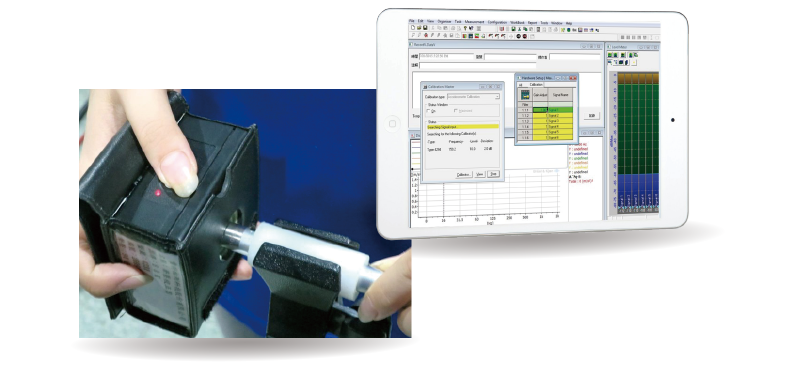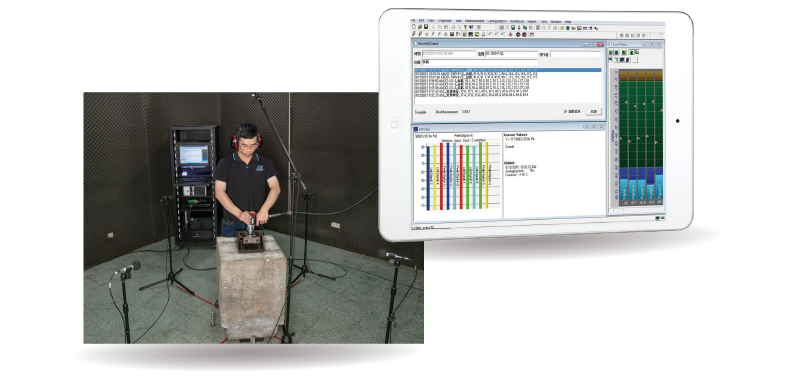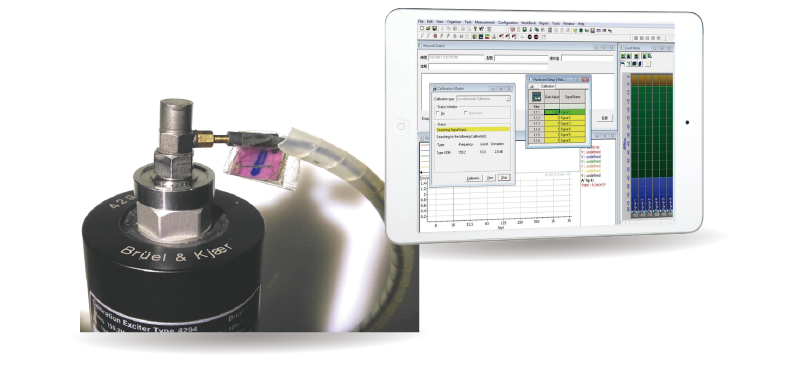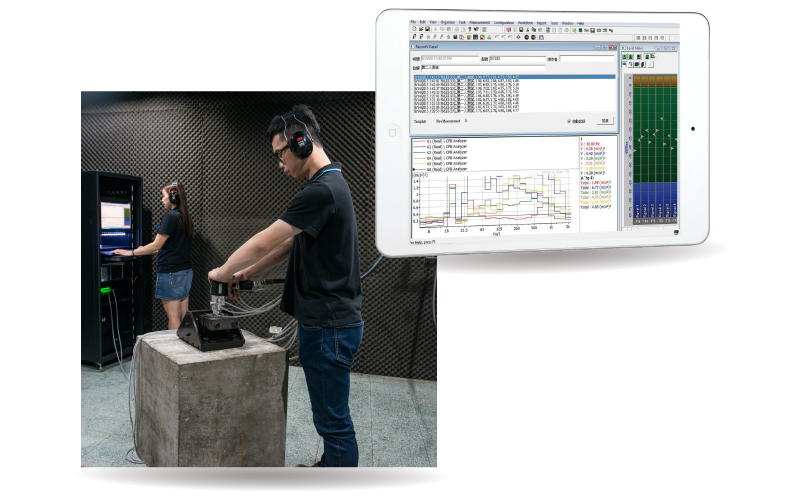Measuring Noise Level
1. Declaration and verification of noise emission values
According to machinery directive 2006/42/EC, for all hand-held non-electric power tools, each instruction manual must contain, where applicable, at least the following information on airborne noise emissions:
◆The A-weighted emission sound pressure level (LpA) at work stations,
◆The A-weighted sound power level (LWA) by the machinery, where the A-weighted emission sound pressure level (LpA) at workstations exceed 80 dB(A),
◆The peak C-weighted instantaneous sound pressure value at workstations (LpC, peak), where this exceeds 63 Pa (130 dB in relation to 20 μPa).

The above values shall be determined with using a hemispherical/cylindrical measurement surface, consisting of a hemisphere standing on a cylindrical pedestal.
2. Calibration of Instruments
The instruments for measuring noise are calibrated in accordance with ISO 3677.

3. Execute Test
The noise emission test conducted by KENTE with following the instructions of ISO 15744, Hand-held non-electric power tools ― Noise measurement code ― Engineering method (grade 2)

4. Issue Report
Measuring Vibration Level
1. Declaration and verification of vibration emission values
The vibration magnitude (level) is represented by the frequency-weighted rms acceleration in m/s2 of the surface of the tool, handle or workpiece in contact with the hand.
The risk to health from vibration is affected by the frequency content of the vibration. When vibration is measured in accordance with ISO 5349-1:2001, vibration frequencies between 8 and 16 Hz are given most weight, and frequencies above and below this range make a smaller contribution to the measured vibration magnitude. This process is called frequency weighting. Vibration meters intended for HAV measurement are equipped with a frequency weighting filter, to modify their sensitivity at different frequencies of vibration.
2. Calibration of Instruments
Vibration meters and other items of measuring equipment should meet the correct specification for the measurement of handtransmitted vibration given in ISO 8041:2005 Accelerometers (vibration transducers) and the accessories and methods for mounting them should be carefully selected; ISO 5349-2:2001 contains useful guidance. Suppliers of vibration-measuring instruments should be able to advise on the selection of equipment suitable for the purpose.

3. Execute Test
The measurement and evaluation of human exposure to hand transmitted vibration comply with the ISO 5349. The vibration transmitted to the hand shall be simultaneously measured and reported for three directions (X, Y, or Z) of an orthogonal coordinate system as shown in the figure below. For a family of machinery, these directions of vibration measurement shall be defined in the vibration test code. Three series of five consecutive tests shall be carried out on each machine tested, using a different operator for each series.
During a vibration measurement, the rms value of the frequency-weighted acceleration is determined. It is important that the measurement duration is long enough to allow a representative average value to be obtained.
Measurements should be made to produce vibration values that represent the average vibration for that tool or process throughout the operator's working period during the day. It is therefore important that the operating conditions and measurement periods etc. are selected to achieve this.
Each test run shall be such that the measurements can be carried out with an integration time in accordance with related ISO standards, when stable operation has been established.


4. Issue Report Testing Processes as shown below



